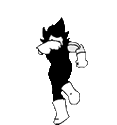- Knuc U Kinte
- Aug 17, 2004
-
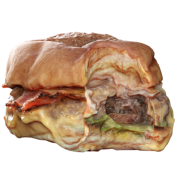
|
|
 #
?
Aug 10, 2016 02:53
#
?
Aug 10, 2016 02:53
|
|
- Adbot
-
ADBOT LOVES YOU
|

|
|
#
?
Apr 26, 2024 17:02
|
|
- Fayez Butts
- Aug 24, 2006
-

|
yes. elixr owns, especially if you want to wait 10 minutes for a $4.50 pour over
|
 #
?
Aug 10, 2016 03:43
#
?
Aug 10, 2016 03:43
|
|
- Knuc U Kinte
- Aug 17, 2004
-

|
tbh i'll take our word for it, ive never seen a cup of diarrhea
Not surprised the computer man has no imagination.
|
 #
?
Aug 10, 2016 03:48
#
?
Aug 10, 2016 03:48
|
|
- Visual GNUdio
- Aug 27, 2003
-


|
Here's the roast console. The software is a general-purpose interface for controlling roasting equipment, from home-brew heat gun/bread machine setups to large-batch commercial roasters from Probat/Diedrich/Ambex/etc . As such, you need to do a little setup to get everything working with your own gear. I've added buttons and sliders to let me control the various components of my particular roaster which you see along the left side (heat & fan) and along the bottom.

When the roast is actually running another line of standard buttons appear along the bottom, all of which (my custom ones you see and the standard ones that only appear during an actual roast) are fully programmable. For example, I have programmed the "DROP" button to leave the drum motor running, set power to 0%, set the fan to 100%, open the bean ejection door solenoid, and engage the agitation arms in the cooling tray. I've then programmed an alarm to shut everything down after 5 minutes of cooling.
The alarms allow you to program basically everything on this machine from the point when you add the beans to the end of the cooling cycle. Every bean is going to react differently so the general approach is to tune the alarms to program your way through a particular bean using a combination of alarm points for temp/time/etc to adjust the heating elements and/or fans.
The latest thinking in the coffee roasting world suggests that a steadily declining Rate of Rise (ROR) is the key to roasts that don't suck. The navy blue line above is the Bean Temperature (BT) which comes from a thermocouple sticking into the pile of beans as they're tumbled around in the drum. Once the roast gets going, you want the BT to rise at a steadily decreasing rate. The blue line in the graph labeled DeltaBT (starting at around 40 seconds at the bottom) tracks the first derivative of the navy curve, showing the rate of change of the BT indicated above. This curve should shoot up after the turning point (labeled TP here) and then slowly, smoothly decline until the end of the roast. With a little smoothing of the data and some squinting this roast almost looks good (it isn't, the beans are terrible).
More recently, it has been posited that the ideal rate of rise should itself look something like a natural log curve. You can enter math expressions directly and have them plotted, or just use a previous roast that tasted good and skip all this dumb math, then set it as a "background" curve to try and match it with your current roast. Once you have a curve you like, you can also configure the software to engage a PID algorithm to control the heat/fan/etc in an attempt to fit the desired curve. I haven't quite gotten this far with the software, but it promises to provide a consistent, repeatable roast which is something I couldn't really accomplish without being able to track the bean temperature.
I have some beans that should be ready for pickup today and I'll finally get a chance to roast something I intend to drink.
edit: sorry cats but I've taken over your tree

Visual GNUdio fucked around with this message at 13:37 on Aug 10, 2016
|
 #
?
Aug 10, 2016 13:08
#
?
Aug 10, 2016 13:08
|
|
- bump_fn
- Apr 12, 2004
-
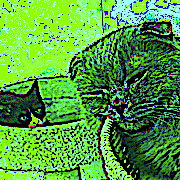
two of them
|
Here's the roast console. The software is a general-purpose interface for controlling roasting equipment, from home-brew heat gun/bread machine setups to large-batch commercial roasters from Probat/Diedrich/Ambex/etc . As such, you need to do a little setup to get everything working with your own gear. I've added buttons and sliders to let me control the various components of my particular roaster which you see along the left side (heat & fan) and along the bottom.

When the roast is actually running another line of standard buttons appear along the bottom, all of which (my custom ones you see and the standard ones that only appear during an actual roast) are fully programmable. For example, I have programmed the "DROP" button to leave the drum motor running, set power to 0%, set the fan to 100%, open the bean ejection door solenoid, and engage the agitation arms in the cooling tray. I've then programmed an alarm to shut everything down after 5 minutes of cooling.
The alarms allow you to program basically everything on this machine from the point when you add the beans to the end of the cooling cycle. Every bean is going to react differently so the general approach is to tune the alarms to program your way through a particular bean using a combination of alarm points for temp/time/etc to adjust the heating elements and/or fans.
The latest thinking in the coffee roasting world suggests that a steadily declining Rate of Rise (ROR) is the key to roasts that don't suck. The navy blue line above is the Bean Temperature (BT) which comes from a thermocouple sticking into the pile of beans as they're tumbled around in the drum. Once the roast gets going, you want the BT to rise at a steadily decreasing rate. The blue line in the graph labeled DeltaBT (starting at around 40 seconds at the bottom) tracks the first derivative of the navy curve, showing the rate of change of the BT indicated above. This curve should shoot up after the turning point (labeled TP here) and then slowly, smoothly decline until the end of the roast. With a little smoothing of the data and some squinting this roast almost looks good (it isn't, the beans are terrible).
More recently, it has been posited that the ideal rate of rise should itself look something like a natural log curve. You can enter math expressions directly and have them plotted, or just use a previous roast that tasted good and skip all this dumb math, then set it as a "background" curve to try and match it with your current roast. Once you have a curve you like, you can also configure the software to engage a PID algorithm to control the heat/fan/etc in an attempt to fit the desired curve. I haven't quite gotten this far with the software, but it promises to provide a consistent, repeatable roast which is something I couldn't really accomplish without being able to track the bean temperature.
I have some beans that should be ready for pickup today and I'll finally get a chance to roast something I intend to drink.
edit: sorry cats but I've taken over your tree

|
 #
?
Aug 10, 2016 16:17
#
?
Aug 10, 2016 16:17
|
|
- Cat Face Joe
- Feb 20, 2005
-
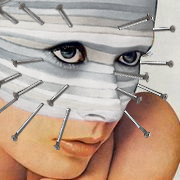
goth vegan crossfit mom who vapes



|
Here's the roast console. The software is a general-purpose interface for controlling roasting equipment, from home-brew heat gun/bread machine setups to large-batch commercial roasters from Probat/Diedrich/Ambex/etc . As such, you need to do a little setup to get everything working with your own gear. I've added buttons and sliders to let me control the various components of my particular roaster which you see along the left side (heat & fan) and along the bottom.

When the roast is actually running another line of standard buttons appear along the bottom, all of which (my custom ones you see and the standard ones that only appear during an actual roast) are fully programmable. For example, I have programmed the "DROP" button to leave the drum motor running, set power to 0%, set the fan to 100%, open the bean ejection door solenoid, and engage the agitation arms in the cooling tray. I've then programmed an alarm to shut everything down after 5 minutes of cooling.
The alarms allow you to program basically everything on this machine from the point when you add the beans to the end of the cooling cycle. Every bean is going to react differently so the general approach is to tune the alarms to program your way through a particular bean using a combination of alarm points for temp/time/etc to adjust the heating elements and/or fans.
The latest thinking in the coffee roasting world suggests that a steadily declining Rate of Rise (ROR) is the key to roasts that don't suck. The navy blue line above is the Bean Temperature (BT) which comes from a thermocouple sticking into the pile of beans as they're tumbled around in the drum. Once the roast gets going, you want the BT to rise at a steadily decreasing rate. The blue line in the graph labeled DeltaBT (starting at around 40 seconds at the bottom) tracks the first derivative of the navy curve, showing the rate of change of the BT indicated above. This curve should shoot up after the turning point (labeled TP here) and then slowly, smoothly decline until the end of the roast. With a little smoothing of the data and some squinting this roast almost looks good (it isn't, the beans are terrible).
More recently, it has been posited that the ideal rate of rise should itself look something like a natural log curve. You can enter math expressions directly and have them plotted, or just use a previous roast that tasted good and skip all this dumb math, then set it as a "background" curve to try and match it with your current roast. Once you have a curve you like, you can also configure the software to engage a PID algorithm to control the heat/fan/etc in an attempt to fit the desired curve. I haven't quite gotten this far with the software, but it promises to provide a consistent, repeatable roast which is something I couldn't really accomplish without being able to track the bean temperature.
I have some beans that should be ready for pickup today and I'll finally get a chance to roast something I intend to drink.
edit: sorry cats but I've taken over your tree

heavens to spergatroid
|
 #
?
Aug 10, 2016 16:20
#
?
Aug 10, 2016 16:20
|
|
- triple sulk
- Sep 17, 2014
-
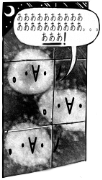



|
Here's the roast console. The software is a general-purpose interface for controlling roasting equipment, from home-brew heat gun/bread machine setups to large-batch commercial roasters from Probat/Diedrich/Ambex/etc . As such, you need to do a little setup to get everything working with your own gear. I've added buttons and sliders to let me control the various components of my particular roaster which you see along the left side (heat & fan) and along the bottom.

When the roast is actually running another line of standard buttons appear along the bottom, all of which (my custom ones you see and the standard ones that only appear during an actual roast) are fully programmable. For example, I have programmed the "DROP" button to leave the drum motor running, set power to 0%, set the fan to 100%, open the bean ejection door solenoid, and engage the agitation arms in the cooling tray. I've then programmed an alarm to shut everything down after 5 minutes of cooling.
The alarms allow you to program basically everything on this machine from the point when you add the beans to the end of the cooling cycle. Every bean is going to react differently so the general approach is to tune the alarms to program your way through a particular bean using a combination of alarm points for temp/time/etc to adjust the heating elements and/or fans.
The latest thinking in the coffee roasting world suggests that a steadily declining Rate of Rise (ROR) is the key to roasts that don't suck. The navy blue line above is the Bean Temperature (BT) which comes from a thermocouple sticking into the pile of beans as they're tumbled around in the drum. Once the roast gets going, you want the BT to rise at a steadily decreasing rate. The blue line in the graph labeled DeltaBT (starting at around 40 seconds at the bottom) tracks the first derivative of the navy curve, showing the rate of change of the BT indicated above. This curve should shoot up after the turning point (labeled TP here) and then slowly, smoothly decline until the end of the roast. With a little smoothing of the data and some squinting this roast almost looks good (it isn't, the beans are terrible).
More recently, it has been posited that the ideal rate of rise should itself look something like a natural log curve. You can enter math expressions directly and have them plotted, or just use a previous roast that tasted good and skip all this dumb math, then set it as a "background" curve to try and match it with your current roast. Once you have a curve you like, you can also configure the software to engage a PID algorithm to control the heat/fan/etc in an attempt to fit the desired curve. I haven't quite gotten this far with the software, but it promises to provide a consistent, repeatable roast which is something I couldn't really accomplish without being able to track the bean temperature.
I have some beans that should be ready for pickup today and I'll finally get a chance to roast something I intend to drink.
edit: sorry cats but I've taken over your tree

|
 #
?
Aug 10, 2016 16:40
#
?
Aug 10, 2016 16:40
|
|
- EndlessRagdoll
- May 20, 2016
-

|
|
 #
?
Aug 10, 2016 17:56
#
?
Aug 10, 2016 17:56
|
|
- Shaggar
- Apr 26, 2006
-
|
Here's the roast console. The software is a general-purpose interface for controlling roasting equipment, from home-brew heat gun/bread machine setups to large-batch commercial roasters from Probat/Diedrich/Ambex/etc . As such, you need to do a little setup to get everything working with your own gear. I've added buttons and sliders to let me control the various components of my particular roaster which you see along the left side (heat & fan) and along the bottom.

When the roast is actually running another line of standard buttons appear along the bottom, all of which (my custom ones you see and the standard ones that only appear during an actual roast) are fully programmable. For example, I have programmed the "DROP" button to leave the drum motor running, set power to 0%, set the fan to 100%, open the bean ejection door solenoid, and engage the agitation arms in the cooling tray. I've then programmed an alarm to shut everything down after 5 minutes of cooling.
The alarms allow you to program basically everything on this machine from the point when you add the beans to the end of the cooling cycle. Every bean is going to react differently so the general approach is to tune the alarms to program your way through a particular bean using a combination of alarm points for temp/time/etc to adjust the heating elements and/or fans.
The latest thinking in the coffee roasting world suggests that a steadily declining Rate of Rise (ROR) is the key to roasts that don't suck. The navy blue line above is the Bean Temperature (BT) which comes from a thermocouple sticking into the pile of beans as they're tumbled around in the drum. Once the roast gets going, you want the BT to rise at a steadily decreasing rate. The blue line in the graph labeled DeltaBT (starting at around 40 seconds at the bottom) tracks the first derivative of the navy curve, showing the rate of change of the BT indicated above. This curve should shoot up after the turning point (labeled TP here) and then slowly, smoothly decline until the end of the roast. With a little smoothing of the data and some squinting this roast almost looks good (it isn't, the beans are terrible).
More recently, it has been posited that the ideal rate of rise should itself look something like a natural log curve. You can enter math expressions directly and have them plotted, or just use a previous roast that tasted good and skip all this dumb math, then set it as a "background" curve to try and match it with your current roast. Once you have a curve you like, you can also configure the software to engage a PID algorithm to control the heat/fan/etc in an attempt to fit the desired curve. I haven't quite gotten this far with the software, but it promises to provide a consistent, repeatable roast which is something I couldn't really accomplish without being able to track the bean temperature.
I have some beans that should be ready for pickup today and I'll finally get a chance to roast something I intend to drink.
edit: sorry cats but I've taken over your tree

nerd
|
 #
?
Aug 10, 2016 18:17
#
?
Aug 10, 2016 18:17
|
|
- maniacdevnull
- Apr 18, 2007
-

FOUR CUBIC FRAMES
DISPROVES SOFT G GOD
YOU ARE EDUCATED STUPID

|
Here's the roast console. The software is a general-purpose interface for controlling roasting equipment, from home-brew heat gun/bread machine setups to large-batch commercial roasters from Probat/Diedrich/Ambex/etc . As such, you need to do a little setup to get everything working with your own gear. I've added buttons and sliders to let me control the various components of my particular roaster which you see along the left side (heat & fan) and along the bottom.

When the roast is actually running another line of standard buttons appear along the bottom, all of which (my custom ones you see and the standard ones that only appear during an actual roast) are fully programmable. For example, I have programmed the "DROP" button to leave the drum motor running, set power to 0%, set the fan to 100%, open the bean ejection door solenoid, and engage the agitation arms in the cooling tray. I've then programmed an alarm to shut everything down after 5 minutes of cooling.
The alarms allow you to program basically everything on this machine from the point when you add the beans to the end of the cooling cycle. Every bean is going to react differently so the general approach is to tune the alarms to program your way through a particular bean using a combination of alarm points for temp/time/etc to adjust the heating elements and/or fans.
The latest thinking in the coffee roasting world suggests that a steadily declining Rate of Rise (ROR) is the key to roasts that don't suck. The navy blue line above is the Bean Temperature (BT) which comes from a thermocouple sticking into the pile of beans as they're tumbled around in the drum. Once the roast gets going, you want the BT to rise at a steadily decreasing rate. The blue line in the graph labeled DeltaBT (starting at around 40 seconds at the bottom) tracks the first derivative of the navy curve, showing the rate of change of the BT indicated above. This curve should shoot up after the turning point (labeled TP here) and then slowly, smoothly decline until the end of the roast. With a little smoothing of the data and some squinting this roast almost looks good (it isn't, the beans are terrible).
More recently, it has been posited that the ideal rate of rise should itself look something like a natural log curve. You can enter math expressions directly and have them plotted, or just use a previous roast that tasted good and skip all this dumb math, then set it as a "background" curve to try and match it with your current roast. Once you have a curve you like, you can also configure the software to engage a PID algorithm to control the heat/fan/etc in an attempt to fit the desired curve. I haven't quite gotten this far with the software, but it promises to provide a consistent, repeatable roast which is something I couldn't really accomplish without being able to track the bean temperature.
I have some beans that should be ready for pickup today and I'll finally get a chance to roast something I intend to drink.
edit: sorry cats but I've taken over your tree

I had Peet's from a K cup.
|
 #
?
Aug 11, 2016 13:33
#
?
Aug 11, 2016 13:33
|
|
- Podima
- Nov 4, 2009
-

by Fluffdaddy
|
FlaviaŽ "Morning Blend" coffee packet.
|
 #
?
Aug 11, 2016 13:41
#
?
Aug 11, 2016 13:41
|
|
- Podima
- Nov 4, 2009
-

by Fluffdaddy
|
FlaviaŽ "Morning Blend" coffee packet.
Update: This was not very good.
|
 #
?
Aug 11, 2016 14:09
#
?
Aug 11, 2016 14:09
|
|
- lord funk
- Feb 16, 2004
-

|
3 shots this morning
dammit my tolerance is building up again
|
 #
?
Aug 11, 2016 15:54
#
?
Aug 11, 2016 15:54
|
|
- bump_fn
- Apr 12, 2004
-

two of them
|
☕️
|
 #
?
Aug 11, 2016 16:12
#
?
Aug 11, 2016 16:12
|
|
- bradzilla
- Oct 15, 2004
-
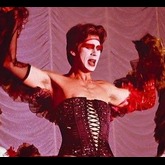
|
had 2 cups of iced coffee earlier, it was good
|
 #
?
Aug 11, 2016 16:30
#
?
Aug 11, 2016 16:30
|
|
- Mad Wack
- Mar 27, 2008
-

"The faster you use your cooldowns, the faster you can use them again"
|
the office swapped out the keurig machines for these boston bean machines that grind the beans and brew in front of you after you place your order
i drank so much coffee today i got sick
|
 #
?
Aug 11, 2016 21:01
#
?
Aug 11, 2016 21:01
|
|
- Adbot
-
ADBOT LOVES YOU
|

|
|
#
?
Apr 26, 2024 17:02
|
|








 im on the take today even though it's coffee from home
im on the take today even though it's coffee from home
































